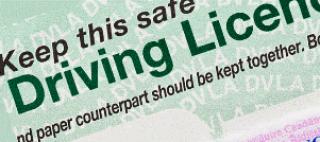Licence and Permits

Minibus driver licensing & operator permits is a complex area of legislation & is dependent upon your organisations commercial or charitable status & the number of vehicles you operate along with the seating capacity of those vehicles. Due to the fact that so many variables will influence your requirements you need to consider carefully your needs.
UK Global Road Safety have developed a simple flow process to allow you to review the options available to you.
Select Your Organisation Status
If you require any advice or wish to discuss the most appropriate options please call our office.
Please be aware that independent schools need to be aware of their (charitable/commercial status) when considering licence & permit requirements.
(Please click & the + Links below to determine status)
Educational Establishments
The status of the educational establishment is an influencing factor in both driver licensing & operation permits required. It is recommended that independent school without charitable status seek independent legal advice to determine their status. Where a Section 19 Permit is required for only outside school hours.
Advice would be to obtain a Section 19 Permit to cover all eventualities.
State Schools.
- Operates up to 16 passenger seats
- If driver has D1 or D1 (101) may drive up to 7,500kg.
- Drivers will require to hold as a minimum a Cat B licence for 2 years.
- Vehicle not to exceed 3,500kg or 4,250kg tonnes for accessible,
- No trailers to be towed,
- Only to be driven in the UK. Driver must be a volunteer, must not be in job description to drive.
- If aged 70+ requires a PCV Medical
|
|
Private Schools.
- Private non-charitable schools (commercial)
- Using vehicles with 9 - 16 seats requires:
- Full PCV operators licence
- Restricted PCV operators licence (1 or 2 vehicles)
- Less than 9 seates no permit required providing the following is adhered to.
- Drivers will require as minimum to hold a Cat B licence
- Vehicle not to exceed 3,500kg or 4,250kg if accessible
- Drivers must be volunteers, must not be in job description to drive
|
|
|
Care Homes
The status of the care home is an influencing factor in both driver licensing & operation permits required.
Charitable Status:.
- Charitable status or not for profit
- Using vehicles with 9 - 16 seats requires a Section 19 Permit
- Drivers will require to hold as a minimum a Cat B licence for 2 years.
- Vehicle not to exceed 3,500kg or 4,250kgs for accessible,
- No trailers to be towed,
- Only to be driven in the UK
- Driver must be a volunteer, must not be in job description to drive.
- If aged 70+ requires a PCV Medical
|
|
Commercial Status.
- Commercial status or private
- PSV operators licence required
- If operating only 1 or 2 vehicles a Restircted PSV Operaters Licence is a minimum.
- Drivers would require a D1 Category licence
- If drivers are paid to drive they require Category D1 by test not D1 (101)
|
|
Car Licence Pre 1997
Car Licence obtained before 1st January 1997 Any driver who obtained the entitlement to drive a car prior to 1st January 1997 (shown as “Group A” [or B for automatics] on an old style licence or as “Category B” and “D1 not for hire or reward” on a new style licence) they are legally permitted to drive a minibus or PCV provided the following is adhered to:
- They are aged 21 years or older
- The minibus has a maximum of 16 passenger seats
- The minibus is not being used for hire or reward
- Not allowed to drive abroad on commercial basis
- If over 70 must pass the PCV Medical
Bear in mind that driving a minibus requires a greater understanding of space & time management due to the vehicles increased size and the differing handling characteristics in braking, acceleration & cornering. UK Global Road Safety suggest regardless of legislation that allows individuals to drive minibuses without any formal training or assessment, that an appropriate training programme is implemented to ensure the safety of drivers, passengers & the public. Such a programme should be considered the minimum where children are carried on behalf of schools and should be considered as part of their Health & Safety Policy. Transport Health & Safety policies should also cover the following:
- Vehicle maintenance
- Journey planning
- Driver fitness
- Individual passenger transport policy if required.
|
Car Licence Post 1997
Car Licence obtained after 1st January 1997. Anyone who passed their category B car test after 1st January 1997 will not have D1 entitlement on their licence, however, they may still drive a minibus with up to 16 passenger seats provided they satisfy each & all of the following points:
- They are driving on behalf of a non-commercial body for social purposes but not for hire or reward (unless operating under a permit)
- They have held a car (category B) licence for at least 2 years They are aged 21 years or older
- They are providing their service on a voluntary (unpaid) basis
- The minibus maximum weight does not exceed 3,500kg (or 4,250kg if fitted with accessible equipment designed for the carriage of passengers with disabilities or wheelchair users)
- They are not towing a trailer
- They are only driving the minibus in the U.K.
These requirements are above and beyond those which regulate drivers who passed their car test prior to 1st January 1997 and so there are many more considerations to take in to account for drivers that fall in to this category.
|
|
If you would like to discuss this aspect of MiDAS, D1 & minibus licence requirements further or have questions concerning either MiDAS training in general or any other aspect of training please telephone our office.
Call 01452 347332 for more information.
